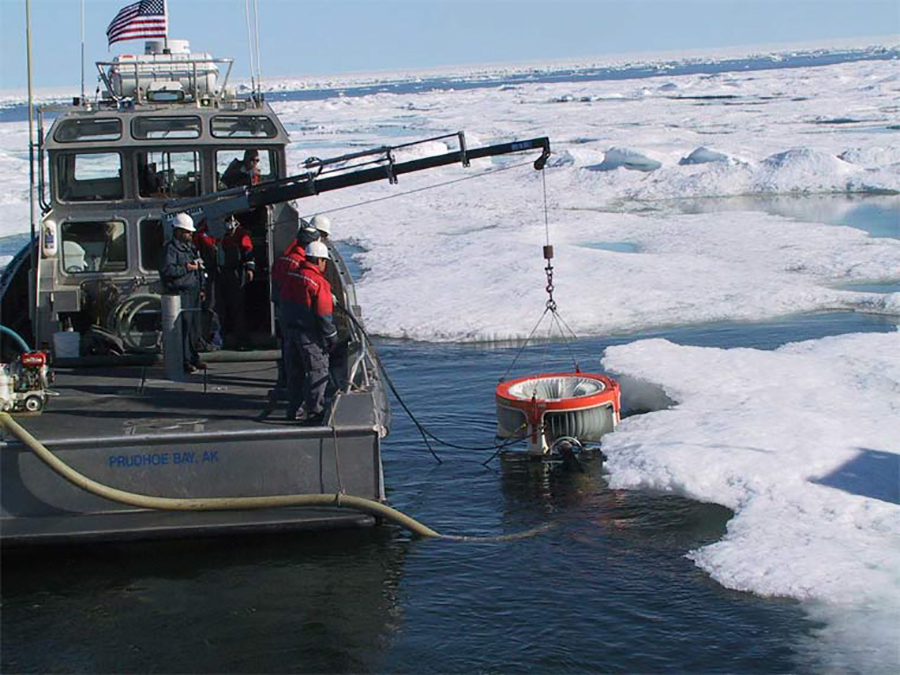Mechanical Recovery
Mechanical recovery, the industry’s primary response system, employs skimmers, booms, boats and personnel to collect and remove oil from the surface.
The equipment is most effective in open water; in broken ice conditions, with ice concentration as low as 10 percent, the efficiency of mechanical recovery falls significantly. This method depends heavily on the ability of personnel to position boats, booms and skimmers and is susceptible to shutdown if any of these factors is affected by poor visibility, dense fog, high sea states and/or freezing temperatures.
Sea Ice Can Affect Mechanical Recovery
The presence of sea ice interferes with containment of oil in sufficient thickness to recover it. Oil tends to disperse and mix into the ice, creating an additional step for responders trying to separate the oil from the ice. Sea ice may reduce the effectiveness of containment booms by interfering with the boom position, allowing oil to entrain or travel under the boom or causing the boom to tear or separate (see video link below). Sea ice may also reduce a skimmer’s efficiency in recovering oil by lowering the rate the skimmer encounters oil and increasing the time needed to position the skimmer for optimum recovery among ice floes. Once oil is trapped under pack ice, the on-water mechanical recovery methods discussed here are no longer a viable option until the ice breaks up.

Skimmer deployed in icy water
© BOEMRE
This video shows some of the challenges that were encountered during a field exercise in the Beaufort Sea during 2000 when mechanical recovery systems failed in the presence of sea ice, even in very low concentrations.
ENDNOTES:
Abdelnour, R. and G. Comfort. (2001). Application of ice booms for oil-spill cleanup in ice infested waters. Fleet Technology Ltd. Kanata, Ontario.
Fingas, M. (2004). Weather windows for oil spill countermeasures. Prepared for Prince William Sound Regional Citizens’ Advisory Council.



